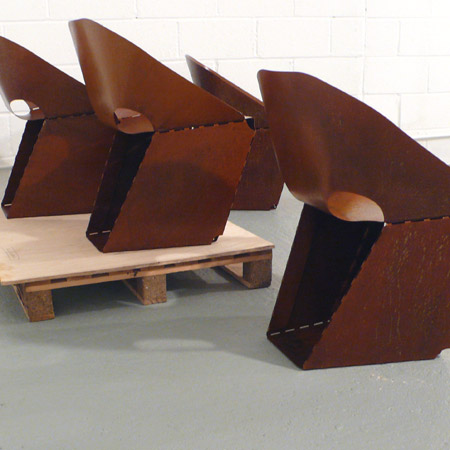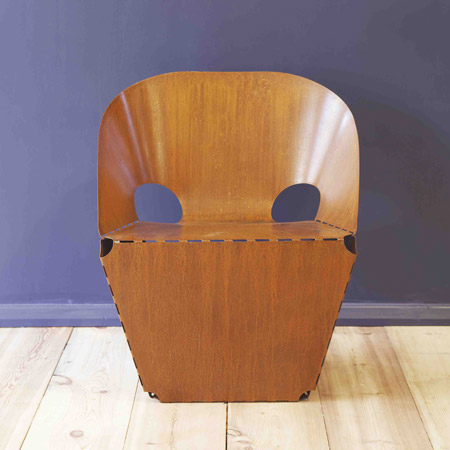
Rusty Sheet Steel Chair by Max Lamb
Fumi gallery in London presents Rusty Sheet Steel Chair, a folded steel chair by designer Max Lamb.
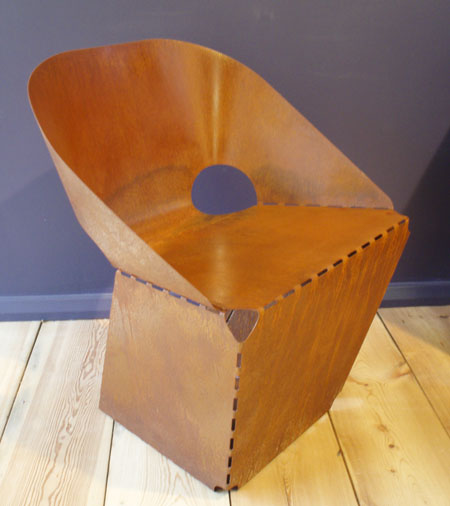
Rusty, made of rusted and lacquered sheet steel, is produced in an edition of 21.
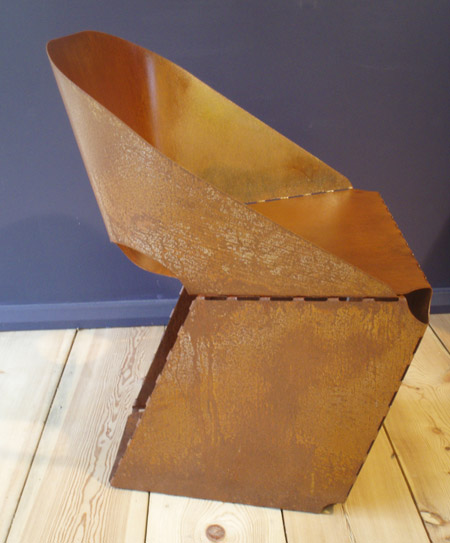
The chair is a version of Lamb's Sheet Steel Chair, which is first presented at his Royal College of Art graduation show two years ago.
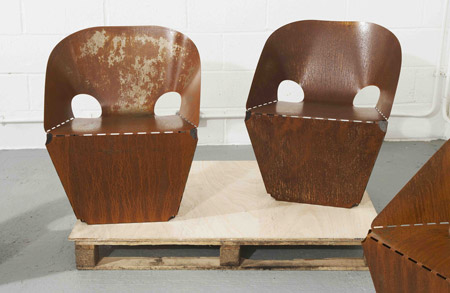
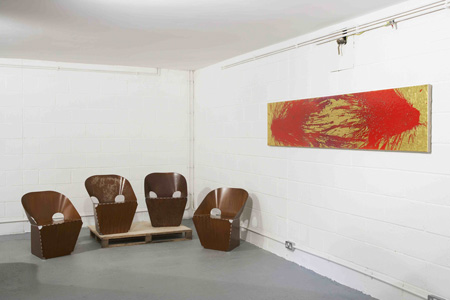
Update 19/06/08: Max Lamb has provided the following additional images and info:
--
EXERCISES IN SEATING
by Max Lamb
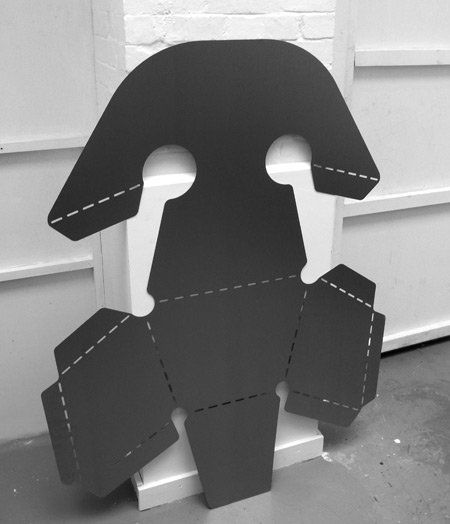
Rusty Sheet Steel Chair
DIMENSIONS: 500w x 600d x 750h
MATERIAL: 16 gauge, CR4 mild steel sheet
PROCESS: The net of a chair is nitrogen assisted laser-cut in 1.2mm mild steel, folded by hand and secured with double sided VHB foam tape, combining a computer controlled industrial process with hand assembly. Left outside the chair begins to corrode and a natural patina develops.
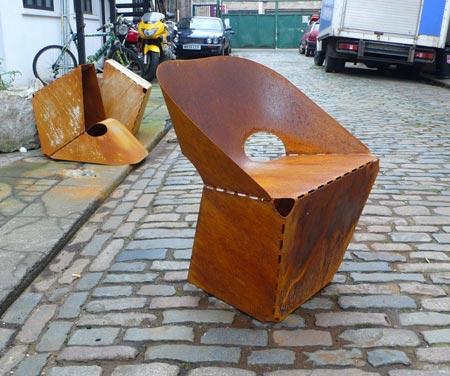
I produced over 30 paper models of my Sheet Steel Chair before sending the file to Cirrus Laser for the first steel prototype to be cut. I discussed the laser-cutting process extensively with Dave Connoway, who runs Cirrus Laser, and it was information regarding sheet metal availability, sheet sizes, steel quality, vector-file types and the cutting process itself, that enabled me to develop the design of my chair quickly, and error free.
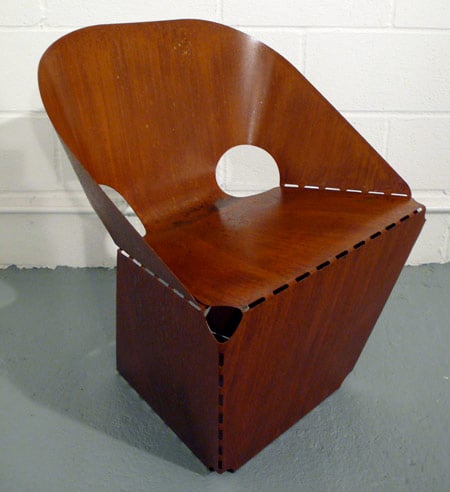
Laser cutting is an industrial process requiring specialist technology and facilities. Inputting coordinates by hand into the adjacent computer operated traditional laser cutting machines. This was a time consuming process that made laser-cutting an expensive technique when only cutting a few of the same component.
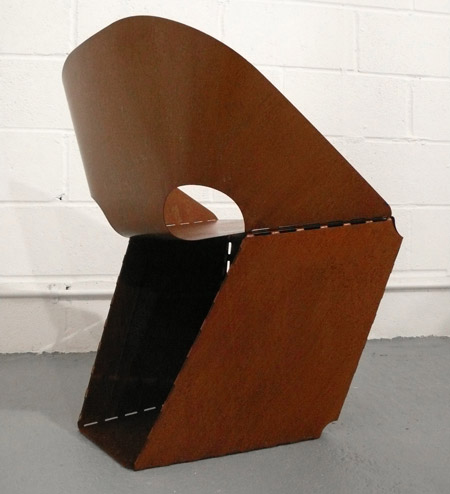
Modern laser cutting machines are still controlled by computer, but the data can be drawn in any vector-based computer program and sent to the machine remotely. The process is very quick to set up meaning it is now almost as economical to cut just one component, as it is to cut thousands of the same piece. The actual time it takes for the laser to cut the template of my chair in steel is just over 3 minutes.
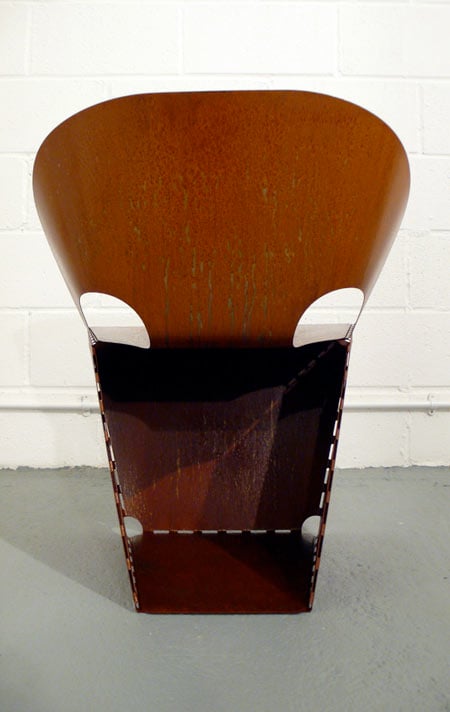
I have explored the low volume production capabilities of modern laser cutting in the fabrication of my chair, concentrating particularly in the use of sheet metal. I liked the idea of incorporating an additional hand-process with which to reinforce the one-off or low batch potential of laser cutting. Bending sheet steel accurately is normally impossible without the use of a hydraulic press. Again, this is an industrial process requiring expensive set-up times, and so it was important to eliminate the need for such a process.
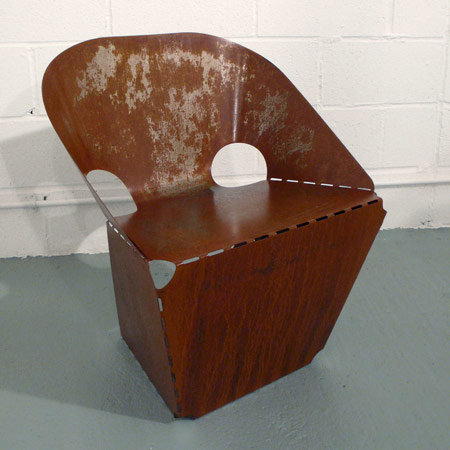
I have incorporated lozenge shape perforations along the bend lines, similar to the way score lines are included on origami ‘net’ to facilitate folding. These slots make bending the metal accurately in a given place, by hand, very easy. The slots also remove over 70% of the metal along the bend line, significantly reducing the force required to bend the metal. I used two short pieces of MDF to help bend the faces without distorting the flat surfaces. After bending the laser-cut template into a chair by hand the panels are ready to be joined.
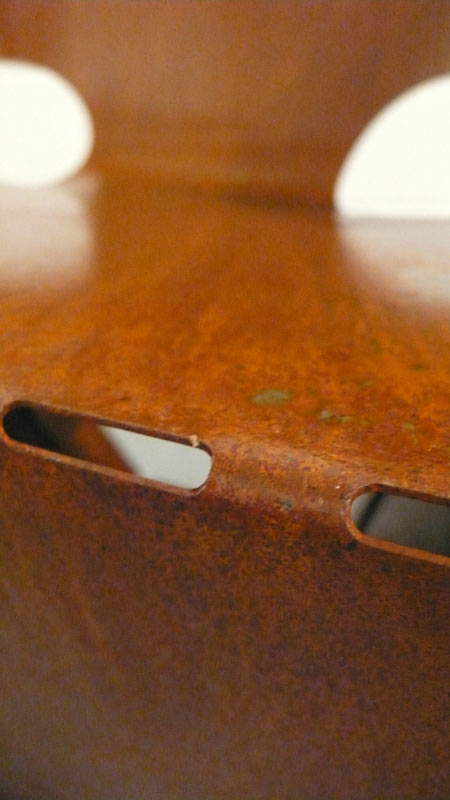
Industrial strength double-sided tape is used to permanently fix the folded panels together. The VHB tape, produced by 3M, is easily applied by hand, compared to traditional permanent fixing methods such as welding and riveting that are performed in the factory using industrial equipment. The tape also distributes the acting tensile forces along the entire join. A flat, grease-free surface is the only requirement in order to achieve a permanent bond between the metal surfaces of the chair. Once a strip of the VHB tape has been applied to the appropriate surface, the backing paper is removed and the corresponding face pressed against it. An instant and permanent bond is achieved. Adhesion of the last two faces completes the production of the chair.
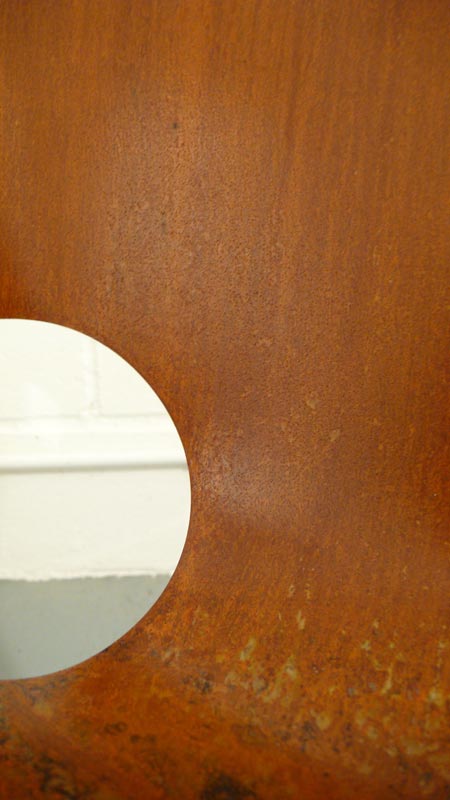
Finishing is then left to nature. Mild steel, when subjected to moisture and oxygen naturally begins to corrode. In industrial production rusting is normally avoided by coating mild steel in plastic paints and wet lacquers immediately after fabrication. I wanted to exploit the natural tendency for mild steel to corrode and celebrate the incredible oranges and purples inherent to rusty steel. Once a satisfactory level of rust has grown on the surface of each chair I brush off loose particles and dust before applying clear coat lacquer over the entire surface. The lacquer intensifies the rust colours and prevents the rust from continuing to develop. Each Rusty Sheet Steel Chair corrodes to different levels and with varying intensities of colour, making every chair unique.
